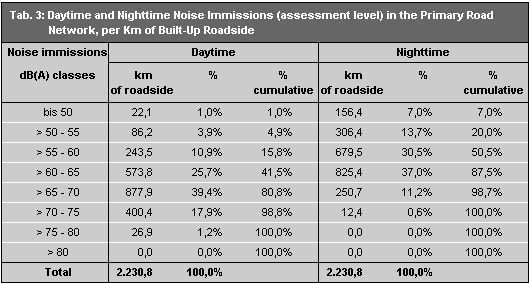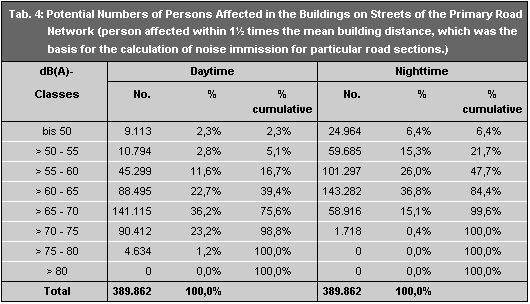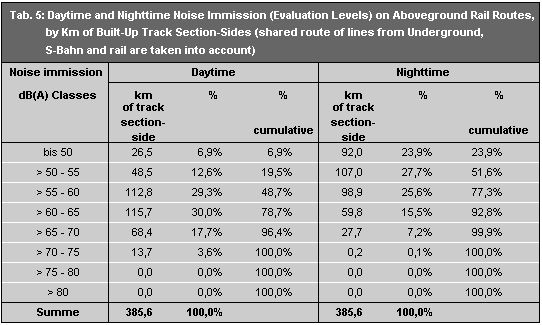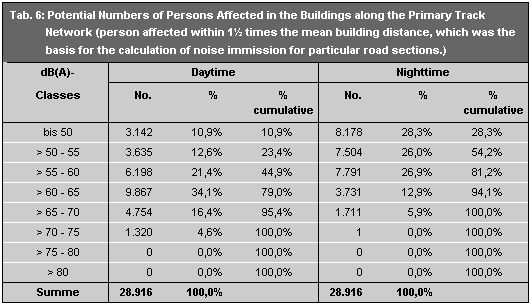The present maps show clearly that the traffic, which has increased considerably, both inside the city and between the city and its surrounding areas since the political change, causes very great noise pollution. Vehicular traffic predominates, but many residents are also exposed to considerable burden due to rail traffic.
For the assessment of the impact situation, the reference values 65 dB (A) daytime and of 55 dB (A) nighttime, which have been determined by noise-effect research, are used in the following; these values have also been established as target values under the Berlin Noise Level Reduction Plan (cf. Ising et al., 1997).
Road Traffic Noise
In Table 3 the lengths of the sides of the street affected by the individual level classes, and their proportional shares of the total length, are shown.
For daytime noise, the reference value of 65 dB (A) is exceeded on 1,334 km of built-up section-sides (which corresponds to 59.8%). Assessment levels of over 80 dB (A) could no longer be ascertained; on the other hand, traffic noise below 50 dB (A) is the exception (0.9%) in the primary road network.
For nighttime noise, the following situation has been ascertained: The nighttime reference value of 55 dB (A) is exceeded at almost 80% of the road sections with roadside buildings. The predominant nighttime impact (59%) is in the range of 55-65 dB (A). Assessing the Berlin noise situation based on the above target values, it must be assumed that daytime noise pollution would have to be lowered by up to 15 db (A) for about 1,330 km of roadway, and nighttime pollution by that amount on as much as 1,780 km.




